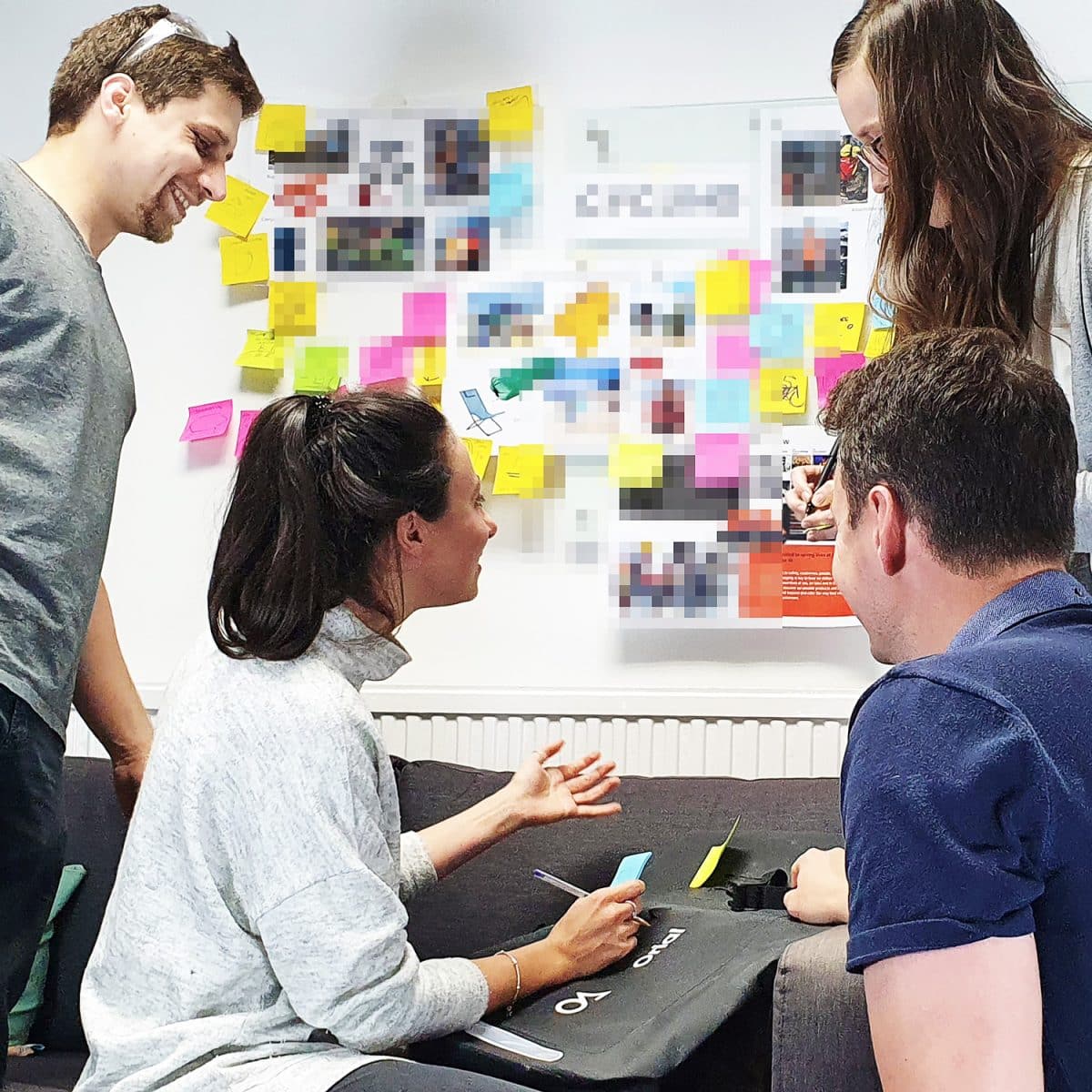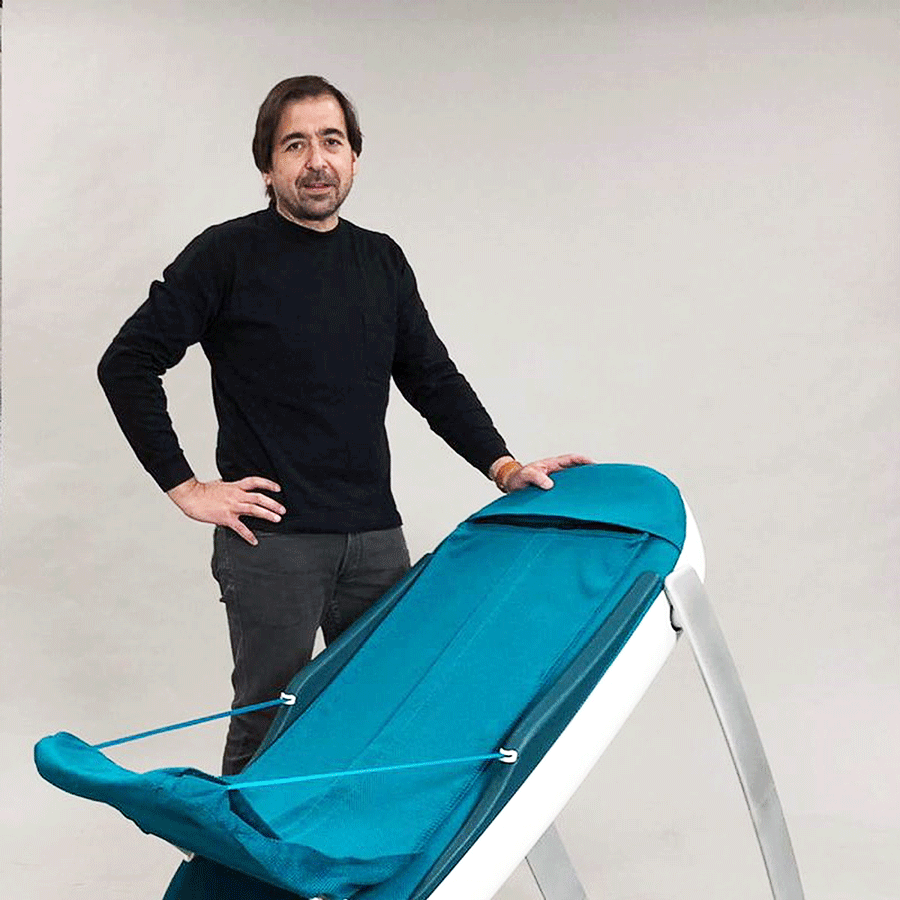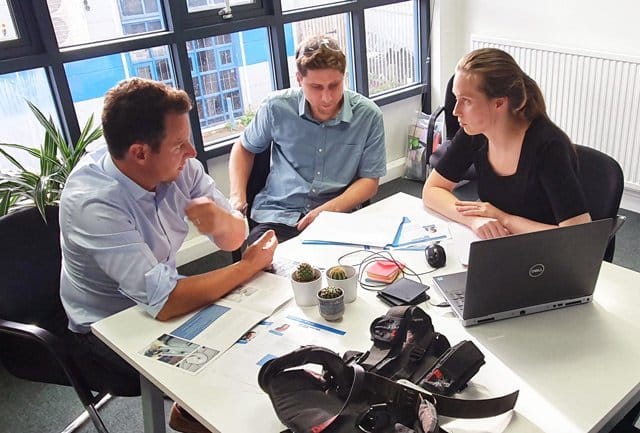Overview
Product research is a vital process that involves investigating various aspects of a new product, from market dynamics to user preferences. It lays the groundwork for successful product development by providing critical data to inform decision-making and enhance the likelihood of success. By understanding consumer needs and market trends, businesses can make informed choices, mitigate risks, and create innovative products that resonate with their target audience. If I’m really honest, this is one of the three main pieces of advice I wish our clients would listen to – it honestly makes all the difference! Thorough research helps avoid common pitfalls, such as assuming customer preferences without validation, leading to more rational and logical decision-making based on factual insights. Ultimately, product research is essential at all stages of the development process, from concept validation to market launch, ensuring that products meet market needs and stand out in a competitive landscape.
What is Product Research?
Product research is the process of investigating key markets, product features, usability, and many other aspects of a new product. It can be performed in a myriad of formats depending on what type of information you are looking to learn and what stage in the development process you are at. The insights gained in research lay an essential foundation for successful product development. This can give you critical data to make informed choices about the direction of your product, and lead to a higher likelihood of success for your business.
I really cannot stress enough the critical importance of this concept, and I have countless stories of projects that failed because innovators assumed they knew what their customers wanted, rather than actually discovering their customers’ true needs. A key lesson from the MBA Innovation course is to shift from making decisions based on emotions to making them based on facts. Product research provides the necessary data to make rational, logical decisions, which significantly enhance the chances of a successful product launch.

Why is Product Design Research Important?
Here are five critical ways that thorough market and design research can provide valuable insights and strategic advantages for your business:
- Unlock Your Market’s Blueprint: Product market research is the compass that guides entrepreneurs through the complex landscape of consumer preferences, revealing the blueprint for what your target audience truly desires and is willing to pay for.
- Minimise Risk, Maximise Success: Product Design Research acts as a risk mitigator, transforming guesswork into strategic decisions, drastically reducing the likelihood of costly failures, and significantly increasing the potential for product success.
- Stay Ahead, Not Just In Step: By identifying emerging trends and untapped opportunities, product market research ensures you’re not just keeping up with the market but staying ahead, creating innovative products that set the standard.
- Speak Their Language, Win Their Loyalty: Understanding your audience’s language and pain points enables you to communicate more effectively, resonating deeply with consumers, and building lasting loyalty that turns customers into brand advocates.
- Precision-Target Your Investments: It empowers you to allocate your resources and efforts where they count the most, ensuring every pound spent on development, marketing, and distribution is an investment towards more guaranteed returns.
The Goals of Product Development Research
With any product development research, the goal is to gain insights to aid you in the developing a new product. The specific goal of product research will vary depending on what you are looking to learn. Early stage research may aim to look for opportunities and white space in the market, perhaps through surveys or ethnographic studies and need-finding. You may be looking to understand the size of a market and the demand for a particular type of product, for example.
Ethnographic activities/studies are research methods used to observe and study people in their natural environment. This can include activities such as participant observation, interviews, surveys, and focus groups. Ethnographic activities aim to gain a deep understanding of a particular user group, including their values, behaviours, and preferences. This research method is commonly used in marketing research to gain insights into consumer behaviour and preferences.
Once you are in the development process, research is often used for concept feedback, refining features and usability. Product Development Research can also be used as a tool to understand pricing and willingness to pay, helping you make key decisions about what the cost requirements may be. Insights learned throughout the process can help you shape the marketing message of your product, showing you what messages resonate with your target market.
When to perform product research
Product research is essential at all stages of product development, ensuring ideas are continuously tested, refined, and aligned with market needs and opportunities. Before concept development, research helps identify the actual problem and market opportunity, utilising ethnographic activities to deeply understand potential users. This foundational understanding can pivot a product’s direction towards success, as illustrated by shifting a mother and baby product to a military application after identifying a more viable market need.
During concept development and selection, product research facilitates decision-making by evaluating potential solutions against user needs and market opportunities. This stage involves direct feedback on solutions to prioritise features and understand competitive differentiation. Before prototyping, product design research validates assumptions, ensuring the chosen concept effectively meets user needs and appeals at the intended price point. Prototyping then becomes a crucial phase for gathering user feedback on usability and intuitiveness, allowing for necessary refinements before production.
Prior to launch, product research informs not only the product design but also the marketing strategy, packaging, pricing, and distribution channels. It uncovers what resonates with customers, ensuring the marketing strategy communicates the product’s value effectively. Across all these stages, product research mitigates risks, saves resources, and maximises the product’s market fit and success potential.
Best practices for effective product development research
Effective product development research hinges on starting with clear objectives to guide tailored research efforts, ensuring the acquisition of focused and actionable insights. Utilising a blend of qualitative and quantitative research methods enriches the understanding of the market and user needs, combining large-scale surveys and industry reports with ethnographic interviews and user testing.
Competitive analysis, or benchmarking, is crucial for identifying market gaps and opportunities, analysing competitors’ strengths and weaknesses to uniquely position your product. The development process is inherently iterative, with research and feedback loops essential for refining the product to better meet customer needs at every stage.
Approaching product development research with an open mind and minimal bias is key to obtaining genuine insights, as shaping research to yield desired outcomes can skew results and diminish the value of the findings. Altogether, these best practices ensure a comprehensive and effective approach to product development research, driving design decisions that resonate with customers and stand out in the market.
How to Conduct Product Research
Conducting product research involves a systematic approach aimed at gathering insights into market dynamics, consumer preferences, and competitive landscapes to inform product development decisions. Start by defining clear research objectives and identifying the most relevant research methodologies, such as surveys, interviews, focus groups, and observational studies, based on your goals.
Thoroughly analyse market trends, competitor products, and consumer behaviour to uncover opportunities and gaps in the market. Utilize a combination of quantitative and qualitative research methods to gather comprehensive data and validate findings. Collaborate with cross-functional teams to interpret research findings and translate them into actionable insights that guide product development strategies. Iterate the research process based on feedback and new data to ensure continuous improvement and alignment with market needs and business objectives.
Read on for more details about how to conduct thorough product research.
Product Research Process
Step 1: Crafting a Product Research Strategy
The first step in engaging in market research is to develop your strategy. A key part of this strategy is setting clear objectives. This will help you decide which research methodology is appropriate and design studies to support those objectives. This strategy may include setting key review points, where you know you will need feedback before proceeding to next steps. For example, you may plan to do research to understand market size, competitor products, and price sensitivity before developing product concepts. This information can define your project brief, help set your strategy for the concepts you develop and, providing provide objectives the concepts must meet.
Later in the development process, your focus may shift to developing branding and pricing strategies. Research is an effective tool in this area as well, and can be used to experiment with different combinations of names, package designs, and price points. This will help you test your strategy and refine it to be as effective as possible. The key is to know what research you will do when to reduce risk and build confidence before investing further in new product development.
Step 2: Finding Gaps
Discovering gaps in a market is often how new product ideas are born. There are various methods you can undertake to try to uncover these gaps. Many industries publish consumer trend reports, these are very useful in understanding the changing elements of a market and spot emerging opportunities. There are also insights to be gained by evaluating bestsellers on platforms like Amazon, technological and material advancements, and browsing social curation sites. Another useful source of information is B2B wholesale marketplaces. There you may observe niche forums for insights into market demand and customer preferences.
Step 3: Initial market insights
Before launching a new product development (NPD) project, gaining thorough initial market insights is fundamental. This early stage involves conducting detailed market research and analysis to assess various critical market-based criteria crucial for the product’s success. Key areas to explore include the market size, which indicates the potential for product success and opportunities for growth.
Equally important is understanding the competitive landscape to identify how the product can stand out by leveraging competitors’ strengths and weaknesses. Assessing the product category’s outlook is vital to ensure the product enters a growing or stable market, enhancing its chances of success. Utilising desk-based research through industry reports, such as Mintel, and conducting interviews with industry experts are effective methods for gathering this essential information.
Step 4: Market-Based Criteria for Product Concept Selection
Product concept selection is a critical stage in the product development process, and it involves evaluating various product ideas to determine which one has the most potential for success. While there are many criteria that can be used to evaluate product concepts, market-based criteria are some of the most important. These criteria are centred around the needs and wants of the target market and are essential for creating a product that meets their needs and is likely to succeed in the market.
Understanding the problems and pain points of the target market and developing a product that addresses these issues is essential for success. Additionally, the product must have features and benefits that appeal to the target market and meet their needs and wants. Finally, the price point of the product is an important market-based criterion. The product must be priced competitively and be perceived as providing value for money by the target market. Therefore, it’s important to conduct pricing research to determine the appropriate price point for the product.
Start by using your current research to outline a set of criteria. Then consider using some of the techniques outlined above to refine and develop these criteria into specific elements that can be used to score product concepts.
Step 5: Product-Based Criteria for Decision Making
In the New Product Development (NPD) process, making informed decisions is critical for a product’s success, necessitating the use of product-based criteria to assess product ideas and concepts effectively. These criteria focus on the product’s inherent characteristics, ensuring it meets technical specifications and can be feasibly developed, manufactured, and launched.
Key criteria include technical feasibility, assessing if the product can be developed within set timelines, budgets, and specifications; design and functionality, ensuring the product addresses the target market’s needs, is user-friendly, and aesthetically appealing; quality, verifying that the product meets high standards of durability, reliability, and safety; and scalability, evaluating the product’s potential for mass production and successful market launch. These product-based criteria are essential in guiding companies through the NPD process, ensuring the development of attractive, functional, high-quality products that can be profitably manufactured and meet market demands.
Step 6: Craft a User Centric Product Design Specification
When building your product design criteria and requirements, it’s important to keep a strong focus on the user. Early stage research to understand your user is critical and helps you design a product your customers will actually want. This type of research should establish who your user is, what problem you are trying to solve, what features are important to them, what constraints may impact them, what price sensitivities may exist, etc. The better you understand your user, the more you can craft a solution that delivers value to them. If the product delivers value at the right price, you have a recipe for a successful product. When building out your project brief, this user research should be folded in to make sure the product is developed with the user in mind. This information, along with the information learned in previous steps will create a robust brief to begin development from. To learn more about how to develop a project brief, check out the article at the link below.
Step 7: Utilising Feedback and Data for Refinement
Setting up a clear and research backed project brief creates a solid foundation for a project. Once you are in the process of development, user feedback is imperative to check your assumptions and ensure you are on the right path. Feedback should be gathered using both qualitative and quantitative methods, creating a well rounded data set. This data may drive which features users value in a product, how they prefer a feature to be executed, or whether the features need to be rethought entirely. This iterative feedback loop helps you hone the design of the product. Using data driven insights helps businesses make informed decisions on how to improve their product and marketing strategies. To learn more about some of the insights services we provide, check out the information at the link below.
Step 8: Consider alternative research methods
Using a variety of research methods helps you recognise recurring themes and understand user perception from more angles. One methodology can often provide context to another. For example, a survey may tell you which feature users assign the most value to, but a deep dive interview may give a better understanding of why. Large unbiased data sets are great for giving clear preferences, but smaller qualitative activities help uncover the why and often lead to unexpected discoveries.
These discoveries may help you find a previously unknown gap in the market, find an additional need your product can solve, or hint at new markets your product may deliver value in. Examples of this type of qualitative study would be user interviews, focus groups, user testing, and field observation. These activities allow you to do a deep dive with your potential users, building empathy and understanding. This knowledge will empower you to develop a better product which effectively solves your user needs.
Step 9: From Research to Reality: Turning Insights into Action
To make product development research effective, it’s important to understand how to translate findings into actionable development plans. If clear learning goals and objectives are established before research, you can design your study to provide clear direction. For example, if you want to know whether a feature is necessary in a product, you can gauge its importance in a survey question, then refine accordingly.
Sometimes in data, the answers are split and there is not a clear path. In this case, you may need further research and perhaps qualitative studies to understand the context more clearly. When reviewing data and choosing which adjustments to make, it’s important to consider potential bias that could be impacting answers and understand the why behind certain data trends.





Techniques you can use for Conducting Product Research
Market research plays a crucial role in identifying market gaps and understanding the target audience’s needs, paving the way for innovative products. Utilising a mix of research techniques can uncover opportunities for leveraging emerging technologies and materials. Surveys provide quantitative insights from a broad audience about unmet needs and interest in new solutions. Focus groups offer qualitative feedback on product concepts and preferences, revealing attitudes towards innovative technologies and potential market gaps.
In-depth interviews allow for a deeper understanding of individual perspectives, helping to pinpoint specific unmet needs and the appeal of new technologies. Observational research uncovers behavior, preferences, and attitudes in natural settings, identifying unaddressed needs. Online analytics draw on digital footprints to understand behaviour and preferences, highlighting areas of opportunity. Together, these techniques equip companies with the insights needed to innovate and meet the evolving demands of their target markets effectively.
Common Mistakes in Product Research
Product design research is a powerful tool if used properly. The biggest mistake one can make is assuming your customer will think exactly the way you do and forgoing research entirely. Another common pitfall is simply shaping survey questions to give you the outcome you want. Unbiased feedback is critical to effective research. Other typical mistakes include neglecting market validation, underestimating competitive analysis, and overlooking customer feedback.

Success Story
Client Background: Our client approached us with a innovative strap adjusting system designed for pushchairs. Despite its potential, initial research with senior buyers and distributors revealed that the product was perceived as too expensive for the current market.
Challenge: Faced with the challenge of market viability due to pricing concerns, our team sought alternative avenues to maximise the product’s potential and profitability.
Approach: Recognising the need for a strategic shift, we embarked on extensive research to explore new markets where the product could address genuine needs and offer significant value. Leveraging one-on-one interviews with military equipment, diving &, firefighting equipment suppliers we narrowed down our focus. Subsequent focus groups with paramedics and firefighters, helped us to understand their equipment needs and pain points.
Insights & Solution: Through our research, we uncovered two promising new markets where the strap adjusting system could fill critical gaps and provide substantial benefits. Firstly, within the military sector, where equipment reliability and speed are paramount, our product offered a practical solution for securing gear and enhancing operational efficiency. Secondly, within the firefighting community, where every second counts, the ability to quickly and securely adjust straps could make a significant difference in emergency situations.
Outcome: Armed with insights from our research, our client was able to pivot their marketing strategy towards these new potential markets. By positioning the product as a solution to genuine challenges faced by military personnel and firefighters, they were able to overcome pricing objections and generate interest from these sectors. Ultimately, product research was absolutely critical to the success of this project.
How D2M can help with Product Research
At D2M, we perform a wide variety of research types throughout the development process. We offer bespoke solutions tailored to the project to ensure we are using a strategy that provides the most value. This may include ethnography and need finding through user interviews in the early stages of a project. We offer innovation workshops to expand thinking and uncover potential market gaps. We build surveys designed to achieve your learning goals and get actionable data for development. These are just a few examples of the impact we can make in the research for your product. To learn more about our approach follow the link below.

Product Research FAQs
What are the types of research for a product?
Product research can be broadly categorised into several types, each serving a unique purpose in understanding the market, consumer needs, and the product’s potential for success. Here are the key types of research relevant to product development:
- Market Research: Focuses on understanding the market dynamics, including size, growth trends, demographics, and competitor analysis. It helps in identifying market opportunities and challenges.
- Consumer Research: Involves studying the target audience’s behaviors, preferences, needs, and pain points. This type of research is crucial for tailoring products to meet consumer expectations.
- Competitive Analysis: Entails analysing competitors’ products, strategies, strengths, and weaknesses. This research helps in identifying gaps in the market and opportunities for differentiation.
- Concept Testing: Involves presenting the product concept to potential users to gauge their interest and gather feedback. This can help refine the product concept before further development.
- Usability Testing: Focuses on evaluating how easy and satisfying the product is to use by testing it with real users. This research is crucial for identifying usability issues and improving the product design.
- Pricing Research: Aims to determine the optimal pricing strategy for the product by evaluating consumer price sensitivity, competitor pricing, and perceived value.
- Brand Research: Explores how the target market perceives the brand and its products. This type of research is important for developing branding and positioning strategies.
- Product Testing: Involves testing the actual product with users to assess its performance, reliability, and satisfaction levels. This research is critical for ensuring the product meets quality standards and user expectations.
- Packaging Research: Examines how consumers react to the product’s packaging design and functionality. This can influence purchasing decisions and brand perception.
- Distribution Research: Studies the most effective channels for distributing the product to the target market, including retail, online, and direct sales channels.
Each type of research plays a vital role in the product development process, providing insights that guide decision-making and strategy formulation to ensure the product’s success in the market.
What is existing product research?
Existing product research involves analysing products that are currently available on the market. This type of research is conducted to gather detailed information about the performance, features, strengths, weaknesses, and consumer reception of products that are similar or related to the one being developed or improved. The primary objectives of existing product research include:
- Understanding the Competitive Landscape: By examining products already available, companies can identify their direct and indirect competitors, understand the competitive advantages these products offer, and the gaps or areas where improvements can be made.
- Benchmarking: This process allows companies to compare their product against existing products in terms of quality, features, pricing, and other relevant criteria. It helps set targets for new or improved products to meet or exceed industry standards.
- Identifying Market Trends: Analysing existing products can reveal trends in design, technology, consumer preferences, and emerging innovations. Understanding these trends is crucial for developing products that meet current market demands.
- Gauging Consumer Satisfaction and Feedback: Reviews, ratings, and feedback on existing products provide valuable insights into what consumers appreciate and dislike. This information can guide the development of products that address unmet needs or improve upon existing offerings.
- Learning from Successes and Failures: By studying the market performance of existing products, companies can learn valuable lessons from both successful products and those that failed to resonate with consumers. This knowledge can inform risk management and product strategy decisions.
Overall, existing product research is a fundamental part of the product development process, offering critical insights that inform strategic decisions, innovation, and competitive positioning.
What does a product researcher do?
A product researcher plays a crucial role in the product development process, focusing on gathering, analysing, and interpreting data to inform decisions related to new or existing products. Their work supports the creation of products that meet market needs, stand out against competitors, and are positioned for success. Here’s what a product researcher typically does:
- Market Analysis: They analyse market trends, consumer behaviours, and the competitive landscape to identify opportunities for new products or improvements to existing ones.
- Consumer Insights: Through various research methods, such as surveys, focus groups, and interviews, product researchers gather insights into consumer needs, preferences, pain points, and expectations.
- Competitive Research: They conduct in-depth analyses of competitor products, identifying their features, strengths, weaknesses, and market positioning to find gaps and opportunities for differentiation.
- Concept Testing: Product researchers test product concepts with target audiences to gauge interest, usability, and potential demand before full-scale development.
- Usability Testing: They evaluate the design and functionality of products, identifying areas for improvement to enhance user experience and satisfaction.
- Feedback Collection: Gathering and analysing customer feedback on existing products to identify trends, issues, and opportunities for product enhancement or development of new offerings.
- Data Analysis: Product researchers analyse data from various sources to draw actionable insights. They use statistical tools and methodologies to ensure the reliability and validity of their findings.
- Reporting and Recommendations: They compile research findings into comprehensive reports, providing clear, actionable recommendations to product teams, designers, and stakeholders to guide product development, marketing strategies, and business decisions.
- Collaboration: Working closely with product development teams, designers, and marketers to ensure research findings are effectively integrated into product design, development, and marketing strategies.
- Innovation: They keep abreast of emerging trends, technologies, and materials that could impact the product’s market, exploring opportunities for innovation and advancement.
In essence, a product researcher is instrumental in reducing the risks associated with product development and launch. By providing evidence-based insights, they help ensure that products are designed with the consumer in mind, are competitive, and meet market demands.
What is the difference between consumer research and product research?
Consumer and product research are both crucial components of the product development process but focus on different aspects.
Consumer research primarily involves understanding the needs, preferences, behaviours, and demographics of the target audience. It delves into consumer psychology and aims to uncover insights that guide product development decisions. Consumer research helps businesses identify market opportunities, segment their target audience, and develop products that resonate with consumers.
On the other hand, product research focuses on the development and refinement of the actual product. It involves activities such as market analysis, competitive bench-marking, concept testing, prototyping, and usability testing. Product research aims to ensure that the product meets consumer needs, fulfils market demand, and stands out from competitors. It also involves evaluating the technical feasibility, cost-effectiveness, and sustainability of the product.
In summary, consumer research informs who the target customers are and what they want, while product research focuses on how to create a product that meets those needs effectively and efficiently. Both types of research are essential for successful product development and market launch.
What is an example of product research?
An example of product research can be seen in the development of a smart wearable device aimed at improving the physical health and wellness of its users. Let’s break down the process with a focus on the product development research that was conducted:
Stage 1: Identifying the Opportunity
Our client began by recognising a growing interest in personal health and wellness technology. Initial market analysis by their team revealed a trend towards consumers wanting more control over their health data, with a particular interest in wearable technology.
Stage 2: Understanding the Target Market
Through surveys and focus groups, the company gathered insights from potential users. They learn that users desire a wearable device that not only tracks physical activity but also provides actionable insights into their health, such as stress levels, sleep quality, and heart health. Additionally, they found a demand for a device that seamlessly integrates with other health apps and devices they already use.
Stage 3: Competitive Analysis
Our product research team conducted an in-depth analysis of existing wearable devices on the market. They identified what features are most appreciated by consumers, where competitors are lacking, and what gaps exist in the current offerings.
Stage 4: Concept Testing
Armed with this information, our team developed several concepts for their smart wearable device. These concepts vary in design, functionality, and price points. Through online surveys and in-person focus groups, they presented these concepts to a segment of their target market. The feedback received helped them understand which features are most valued, how much consumers are willing to pay, and which concept has the highest potential for success.
Stage 5: Prototyping and Usability Testing
Our client decided on a concept that combines activity tracking with detailed health insights, offering suggestions for improving wellness based on the user’s data. We then developed a prototype and conduct usability testing with a small group of target users. This testing revealed insights into how users interact with the device, the intuitiveness of the interface, and some issues and frustrations experienced. Based on this feedback, our team made the necessary adjustments to the design and functionality.
Stage 6: Finalising the Product for Launch
After refining the prototype, our client conducted a final round of product testing to confirm its readiness for the market. They also begun developing marketing strategies based on insights gathered throughout the research process about what messages and features resonated most with their target audience.
Conclusion
Comprehensive product research is imperative to the process of developing successful products. It is the best tool available to mitigate your risk and protect your investment by enhancing the likelihood of success. It creates better clarity in decision making, and allows you to create impactful products in the world. If you want to develop a product that your customer will desire, that fills both a user and market need, product research should be the foundation of your development process.
